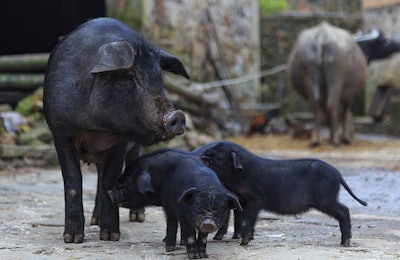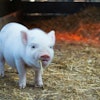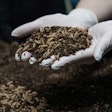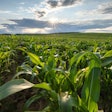
Is there more optimism about African swine fever in China?
Is African swine fever’s (ASF) impact on Chinese pork production slowing? Maybe. Or the government is very optimistic about the state of the disease moving into 2020. Nearly 18 months after ASF took hold of the Chinese swine herd and quickly spread across Southeast Asia and parts of Europe, the world’s largest pork producer is making moves to restock its herd.
China has invested more than US$7 billion to bring 22 million pigs to small producers as part of a three-year plan, Bloomberg reports, a program culminating at a time when pork prices in the country are at an all-time high.
“I think the commitment is there. The Chinese government and provincial leaders are saying the right things in terms of controlling the virus and trying to minimize the devastation it has cause the pork industry,” explains Will Sawyer, CoBank’s lead economist – animal protein, “but we question if pushing small producers forward is the safest, most practical way to rebuild. It might be the fastest, but it’s not the best long-term strategy.”
The challenge lies with the biosecurity threat posed by traditional wet markets, loose feeding practices and the proximity of small farms to each other — circumstances that helped drive ASF’s rampant spread and difficult containment in the first place.
In Sawyer’s opinion, the Chinese pig industry’s rebuilding phase will be the most interesting part of ASF’s effects.
“Who are going to be the players that really drive the new (pork) supply? Is it the larger commercial, more biosecurity producers that we would like to see in Chinese hog production, who provide a high degree of stability in their supply? Or will Chinese hog production continue to be dominated by the small backyard producer?” he says.
Long-term, most analysts are uncertain whether the ASF outbreak will lead to normalizing large commercial swine production or if small producers will prevail.
Feed industry implications
In wake of losing more than 50% of its herd, China has experienced a 30-40% decline in swine feed production, Sawyer reports, but commercial feed producers have moved their production to serve other species, including double-digit increases in aquaculture, poultry and layer demand.
Long term, Sawyer believes China’s poultry industry will continue to grow, and the increase in aqua and poultry feed demand will “balance the model” for its feed industry stakeholders.
In addition, he predicts ASF will usher in a period of expansion for large hog producers to “more the norm — though not average — the more you’re going to see feed demand increase.”
For more get a more in-depth look at developments in the global protein markets, register to see Sawyer’s “2020 Poultry and Feed Production Outlook” at the Feed Strategy Conference at IPPE 2020.


















